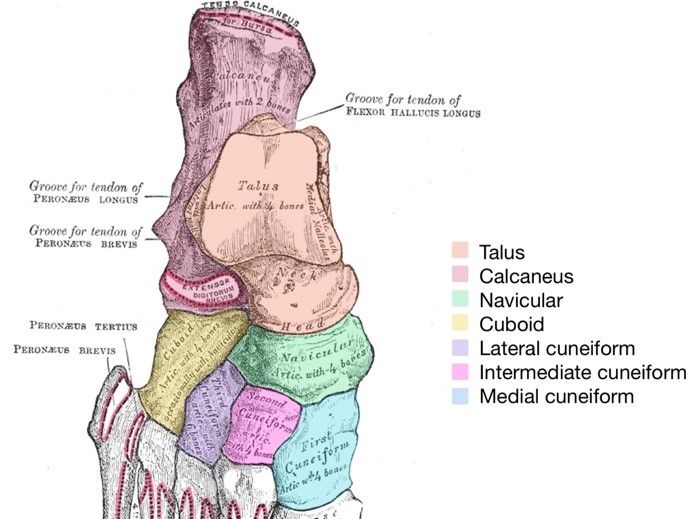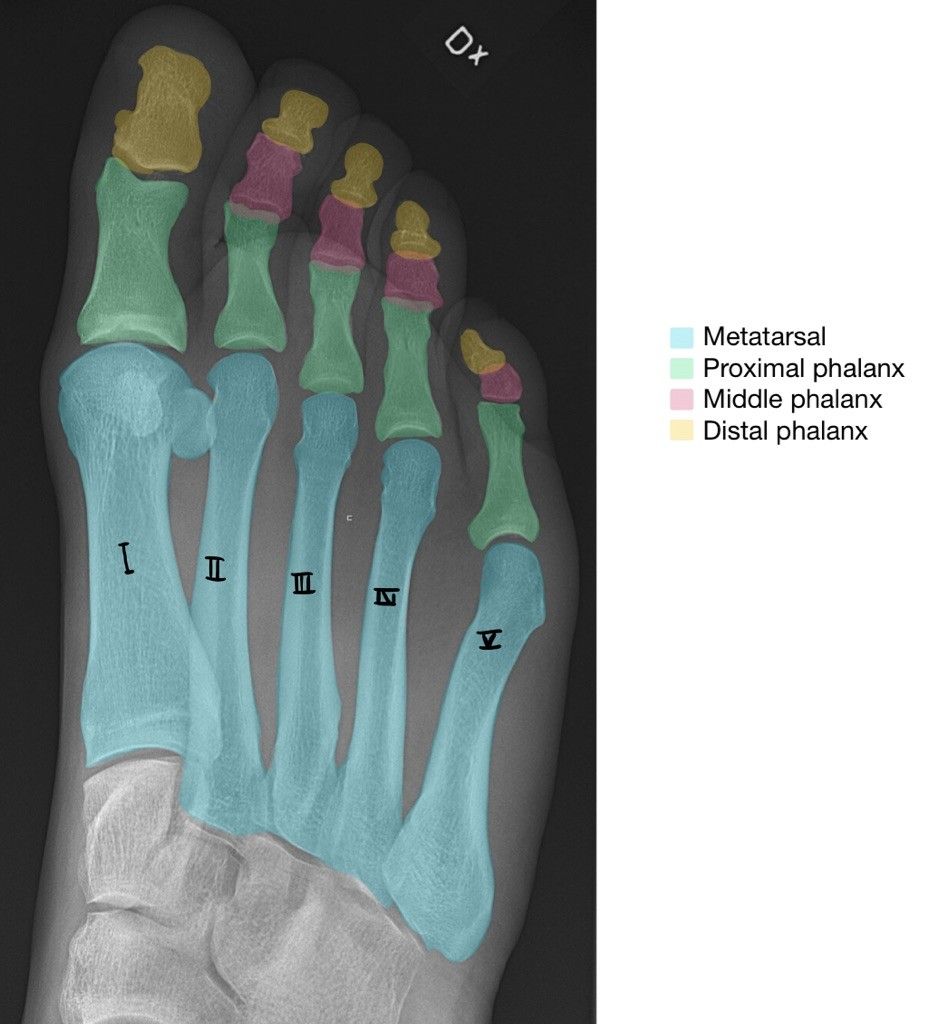Next Lesson - Muscles of the Lower Leg
Abstract
- The foot is made of 26 bones which can be divided into three groups: tarsals, metatarsals and phalanges.
- There are seven tarsal bones: Talus, Calcaneus, Navicular, Cuboid and three Cuneiforms.
- There are five metatarsals, one for each digit, and three phalanges for each digit, except for the hallux (big toe) which only has two phalanges.
Core
There is a total of 26 bones of the foot, which can be divided into three separate groups:
- Tarsals – located proximally within the foot.
- Metatarsals – which connect the phalanges with the tarsal bones.
- Phalanges – the bones within each digit.
The bones of the foot share the common function of weight-bearing and are vital in mechanical support whilst standing and moving.
There are seven tarsal bones:
Talus – the most superior of the tarsal bones. It articulates with the tibia and fibula to form the ankle joint. It also articulates with the calcaneus to transmit forces when standing and moving to provide stability.
Calcaneus – it is found inferior to the talus and forms the ‘heel’ of the foot. It is essential in taking the weight of the body during the ‘heel-strike’ in gait. Other than mechanical support, it is the site of attachment for the Achilles tendon, and therefore is an important bone in providing leverage for plantarflexion. The achilles tendon (aka. Calcaneal tendon) attaches to the calcaneus via the calcaneal tuberosity.
Navicular – this bone is found immediately distal to the talus, and on the medial side of the foot. On the inferior surface, there is a tuberosity that is the site of attachment for tibialis posterior (therefore contributing to plantarflexion).
Cuboid – one of the most distal tarsal bones and is found laterally. It lies just anterior to the calcaneus. It articulates with the fourth and fifth metatarsals.
Cuneiforms – there are three cuneiforms names by their relationship to each other (lateral, middle and medial). To provide structural support, they are shaped to form an arch within the foot. They also articulate with the first, second and third metatarsals, providing an element of flexibility.

Diagram - An anterior view of the tarsal bones
Creative commons source by Henry Gray Anatomy of the Human Body (1918), edited by Sachin Sudhakaran [CC BY-SA 4.0 (https://creativecommons.org/licenses/by-sa/4.0)]
There are five metatarsals, one for each digit of the foot. They consist of a head, shaft and base, similar to the metacarpals in the hand. The base articulates with the tarsal bones to form tarsometatarsal joints. The head articulates with the phalanges of each digit via the metatarsophalangeal joint.
These are bones found within each toe. Each digit has three phalanges (proximal, middle and distal) with exception for the big toe (the hallux), which only has two (proximal and distal). The proximal phalanges articulate with the metatarsal via the metatarsophalangeal joints. Phalanges within the same digit articulate via interphalangeal joints.

Diagram - An X-Ray of the right foot. Note how the metatarsals are numbered I – V (medial to lateral)
Creative commons source by Mikael Häggström, M.D., edited by Sachin Sudhakaran [CC BY-SA 4.0 (https://creativecommons.org/licenses/by-sa/4.0)]
For Pathologies and Conditions affecting the Foot area, check out our Conditions of the Foot and Ankle articles.
Reviewed by: Dr. Thomas Burnell
Edited by: Dr. Maddie Swannack
- 5639

